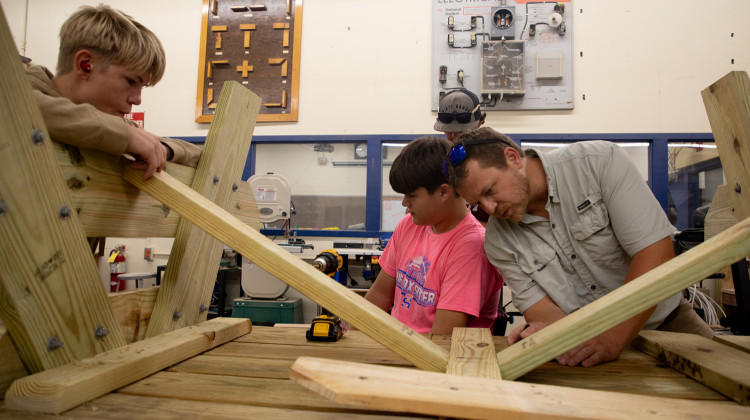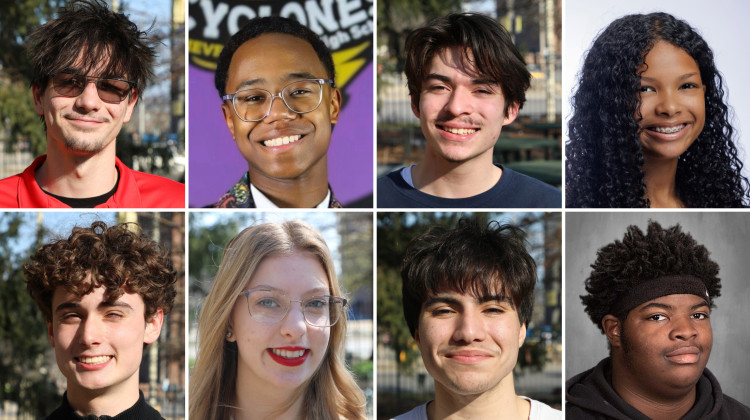
Reading and math scores for 13-year-olds dropped on a key national test. The results are another sign of the pandemic’s effects on students.
NoSystem Images / Getty ImagesMatt Barnum, Chalkbeat
American 13-year-olds remain far behind in key math and reading skills, according to the latest data from a long-running national test.
Scores were substantially lower in the fall of 2022 compared to the last time the test was administered three years earlier. Making matters worse, even before the pandemic hit, 13-year-olds had lost ground on the National Assessment of Educational Progress or NAEP.
That adds up to a striking collapse in achievement scores since 2012, after decades of progress in math and modest gains in reading. In reading, 13-year-olds scored about the same as those who took the test in 1971, when it was first administered. Math scores were now comparable to those in 1992.
The data is just the latest evidence that the pandemic and school closures exacted a steep toll on student learning. These scores do not shed light on whether schools have made any progress in closing these learning gaps, since they offer only a snapshot in time. Other analyses show that students have made up some of what they have lost. Regardless, the new data suggest that most students remain far back from where they would normally be if not for the pandemic.
“The learning disruption further undermined the development of basic skills that students need at this age,” said Peggy Carr, commissioner of the arm of the U.S. Department of Education that administers the exam. “This is a huge scale of challenge that faces the nation today.”
Tuesday’s results come from NAEP’s long-term trend exam, which has tested students’ basic skills since the 1970s. Between October and December of last year, the test was given to a representative sample of 13-year-old students, who are typically in seventh or eighth grade.
These students scored nine points worse in math and four points worse in reading, compared to 13-year-olds in 2020. That year marked a notable decline compared to 2012, the high point of scores on both tests.
For instance, in 2012, 85% of 13-year-olds had demonstrated skills in basic problem solving and math operations, like multiplication. In 2020, that number fell to 79% and now is at 71%.
The declines affected large swaths of students, but Black 13-year-olds saw particularly steep drops in both subjects. The gap between the lowest- and highest-performing students also widened — continuing a pre-pandemic trend that has alarmed and befuddled experts. (Unlike the main NAEP exam, these results are not broken down by state or city.)
In a survey accompanying the test, students reported being absent from school far more frequently and reading for pleasure less often.
The test score results align with a variety of other assessments, including NAEP’s long term trend tests of 9-year-olds and the main NAEP given to fourth and eighth graders. This and other data have told a consistent story:
“It’s really a body of evidence that is setting up an urgency for the need for policymakers, for researchers to figure out what we need to do moving forward,” said Mark Miller, an eighth grade math teacher and a former member of the board that oversees NAEP.
Standardized tests are only one measure of academic achievement, but these scores matter because they are predictive of students’ — and the country’s — success. One recent study found that state scores on a separate NAEP eighth-grade math test predicted high school graduation, adult income, and incarceration rates.
Through the fall of last year, students appear to have recovered some — but not nearly all — of the lost ground. An analysis by NWEA, a testing company, tracked students’ progress through the beginning of this school year. The group found that students had made up between 10% and 40% of learning loss depending on the grade and subject. (Students in eighth grade, which most closely corresponds to the 13-year-olds tested by NAEP, were on the lower end of this range.) A separate study using state tests from last year found similar results.
“Even with continued rebounding, student achievement remains lower than in a typical year and full recovery is likely still several years away,” wrote NWEA researchers.
Supported by tens of billions of dollars in federal money, schools have launched a variety of catch-up strategies, including summer school, small-group tutoring, and hiring more teachers and other staff. Although there has been evidence of modest recovery, researchers say it’s not yet clear how successful particular approaches have been. “There is nothing in this data that tells us what is working,” said Carr, referring to the recent results.
A recent Chalkbeat analysis found that many large districts’ tutoring programs have reached less than 10% of students. A popular online tutoring program has also had low uptake. Adding extra time to the typical school day or year has been rare, and some experts fear that optional programming will not reach students most in need of help. Still, the NWEA analysis found that students lost less-than-usual academic ground in the summer of 2022, which could be due to extra summer programming.
Miller, who teaches in Colorado Springs, Colorado, said his school has used COVID relief money to ensure all students now have a computer or tablet, to offer free summer credit recovery, and to provide after-school tutoring. He’s seen some of his students improve from the after-school help through the extra time and practice. “If they get it in the morning of my class and the afternoon again, it’s beneficial,” he said.
In his own class this year, Miller intentionally focused on building relationships to get students bought into his lessons. He says it paid off: “I was able to get kids to engage in mathematics more so, not because they loved the math, but because we had built a trusting relationship where they were willing to work and put in some extra effort and time for me.”
 DONATE
DONATE






 Support WFYI. We can't do it without you.
Support WFYI. We can't do it without you.